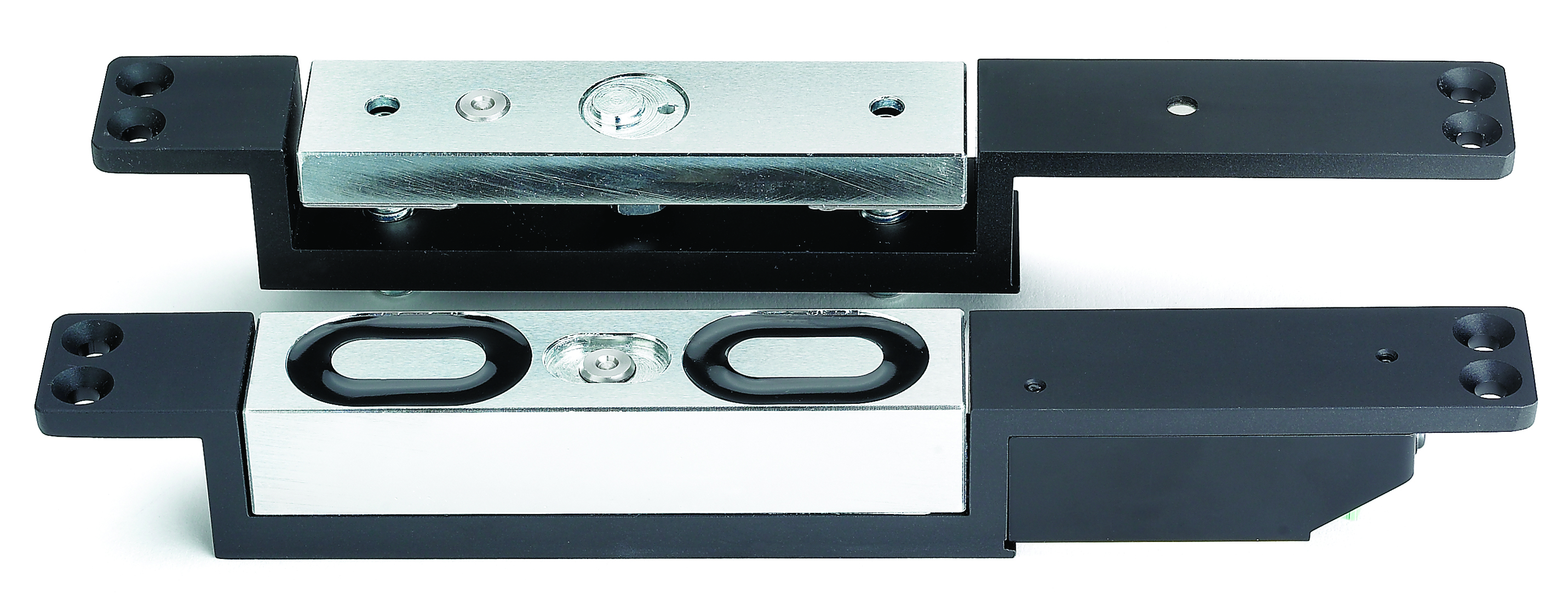
The recent tragic events at the Grenfell Tower flats in London has proven to be a real wake up call to everyone involved with the Fire, Safety and Access control market, prompting specifiers and installers to ensure that all the products supplied and fitted to fire doors are fully tested and installed in accordance with the manufacturer’s instructions and that the products fully comply with the latest fire test procedures and building regulations standards.
Securefast are recognised as one of the UK’s leading providers of a comprehensive range of fire rated locking solutions all of which are fully tested to EN1634-1, for 30 minute and 60 minute timber fire doors. This testing includes the company’s range of Electro Magnetic locks that are specifically designed for internal doors that also operate as fire doors.
Securefast have not only fire tested their Electro Magnetic Lock range but have also had them tested by an independent test house to TS010:2016, which is a performance standard that ensures that there is a consistency in the holding force of the magnet and to give customers the confidence that the product does what is claimed by the manufacturer. These products all have a Declaration of Conformity which can be downloaded from the company website https://www.securefast.co.uk/technical/certification-&-doc/ under the section Electro-Magnetic Locks.
To assist specifiers in selecting the appropriate product for their installation, Securefast’s Group Technical Director, Kevin O’Reilly outlines below a number of the key factors that specifiers need to consider when commissioning fire safety access controls.
Every fire door is required to act as a barrier to the passage of smoke and/or fire to varying degrees depending upon its location in a building and the fire hazards associated with that building.
It is important to note that any product installed does not affect the integrity of the door, therefore Securefast have ensured that their face to face and transom housed Electro-magnetic locks have been fully tested and fire rated for use on 30 and 60 minute fire doors. It is also relevant that the intumescent used is the same as that tested with the product. Securefast specifies Interdens intumescent wrap around the bolt fixing through the door to ensure that when heat is transferred during a fire that it fully seals and ensures that the door stays intact for the duration intended. Any substitute intumescent may not react in the same way; many not fulfil the aperture as intended and may compromise the performance of the fire door.
There are a number of regulations which apply to both new and existing buildings across the UK.
In the case of new buildings, or those which include alterations, extensions or change of use, the appropriate Building Regulations apply.
Existing buildings, other than domestic properties, are governed by the requirements of the Regulatory Reform (Fire Safety) Order: 2005 – otherwise known as the RRO
It should also be noted that Regulation 38 of the Building Regulations (England and Wales) which links the Building Regulations to the RRO for those buildings to which the RRO applies.
New Buildings
Building Regulations are known as Approved Documents (or equivalent) and designed to help meet the minimum standards required for construction in the UK.
Because fire doors are functional items and are necessary in all buildings and structures, they are required to meet a number of different regulations such as sound, accessibility, ventilation, thermal efficiency and safety glazing as well as fire safety.
The Approved Document regulations in England, Scotland, Wales and Northern Ireland are as the following:-
- England and Wales – Approved Documents
- Scottish Building Standards – Technical Handbooks
- Northern Ireland – Technical Booklets
- Other Regulations and Codes
In addition to building regulations, fire doors may also be required to comply with other codes and standards to meet BREEAM and the Code for Sustainable Homes criteria, as well as procurement requirements for responsible sourcing of materials such as those provided by forest certification and chain of custody required under CPET regulations, which apply to ALL projects undertaken by UK Government Public Sector and its agencies.
Existing buildings
The Regulatory Reform (Fire Safety) Order 2005 replaced over 70 pieces of fire safety law and came into force in 2006.
The responsibility for fire risk assessment in all non-domestic buildings, including the common parts of flats and houses of multiple occupancy falls to the so-called ‘responsible person’.
Under the FSO (Fire Safety Order), the responsible person must carry out a fire safety risk assessment and implement and maintain a fire management plan.
The law applies to you if you are:
- responsible for business premises
- an employer or self-employed with business premises
- responsible for a part of a dwelling where that part is solely used for business purposes
- a charity or voluntary organisation
- a contractor with a degree of control over any premises
- providing accommodation for paying guests
Fire doors play a major role in the fire safety and protection of ALL buildings covered by the FSO and it is important that fire doors are inspected correctly and maintained in order to ensure compliance.
Failure to do so can place property and lives at risk and is likely to result in criminal prosecution.
For further information on the Securefast range of fire rated Electro-magnetic locks, please contact the sales team on 01543 501600 or visit the web site: www.securefast.co.uk
